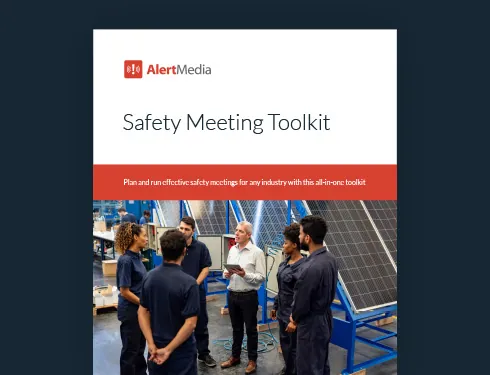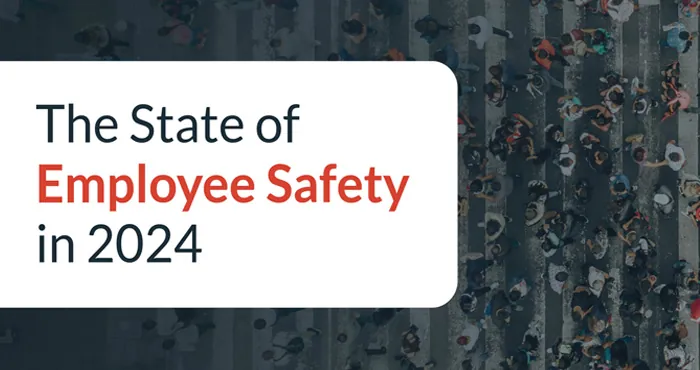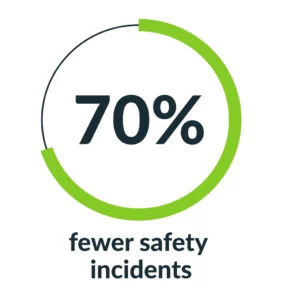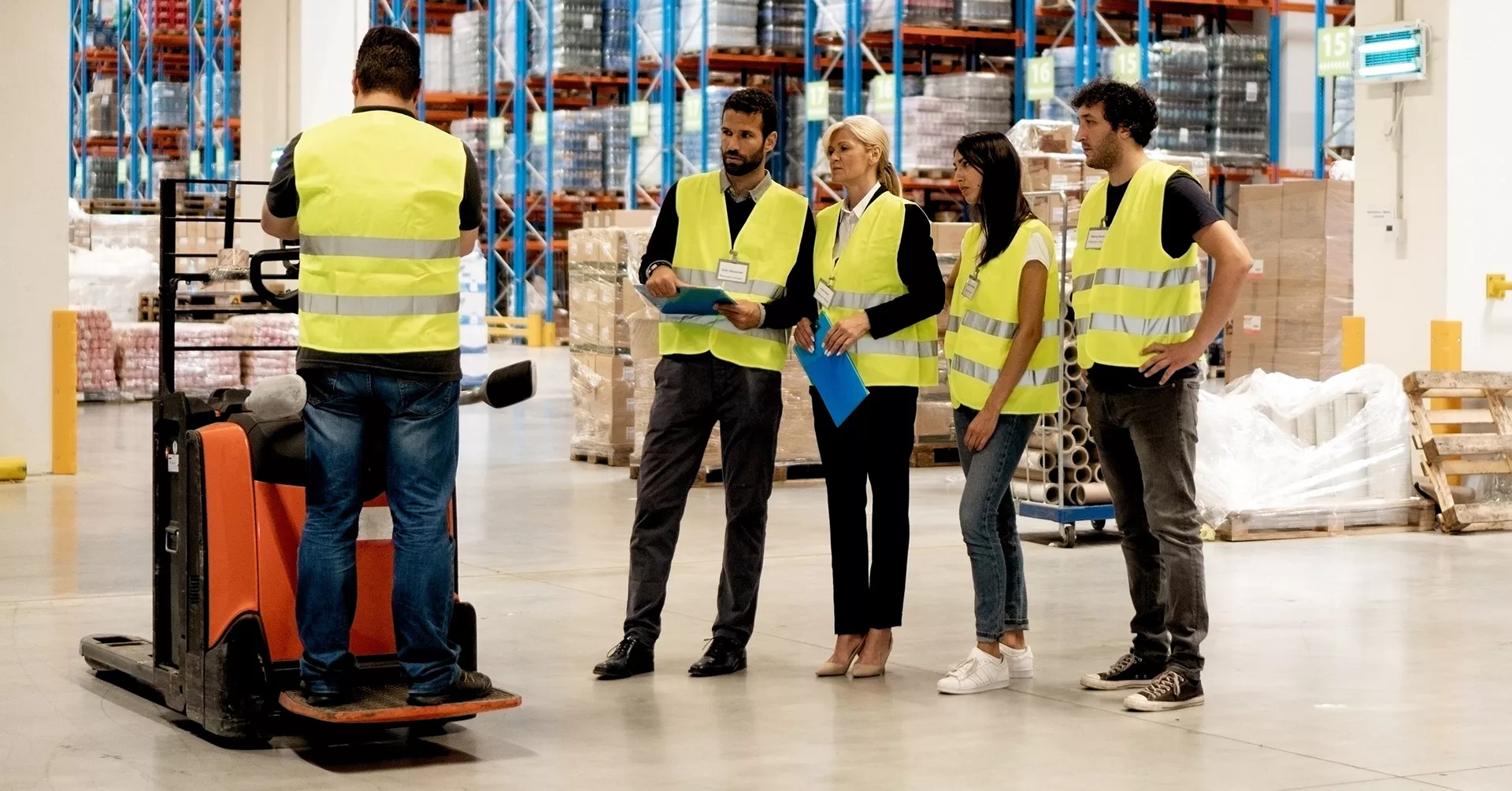
6 Best Safety Engagement Ideas for Real Cultural Change in Your Organization
A workplace culture that embraces safety is ingrained in every process and decision your company makes. Read on for safety engagement ideas to cultivate and maintain a strong safety culture.

Most companies meet at least a handful of basic safety requirements, such as maintaining fire extinguishers and displaying evacuation routes. While these are critical tools for keeping your people and property safe, they’re only the beginning. Cultivating a strong safety culture in your organization means you can trust employees to follow procedures and keep safety in mind at all times. Reaching that point doesn’t happen overnight, but there are plenty of safety engagement ideas to help get you there.
87% of workers polled in the 2024 State of the Employee Safety Report are concerned about experiencing an emergency at work. You can have detailed plans in place, but if staff members aren’t engaged, will they be able to confidently adhere to those protocols?
Safety Meeting Toolkit

A company’s safety strategy comprises a variety of initiatives, tools, and processes. But its effectiveness in an emergency relies on employees putting those into action every day. Read on to discover how to build and maintain a culture of employee engagement when it comes to safety.
How to Improve Workplace Safety with Employee Engagement
Workplace safety encompasses everything from making sure employees don’t slip on wet floors to operating heavy machinery to preparing for hurricanes, earthquakes, or floods. Because these potential hazards involve such unique considerations—operating without accidents, injuries, and even bigger dangers requires more than a checklist of supplies and procedures.
It requires establishing a strong safety culture. A workplace culture that embraces safety is ingrained in every process and decision your company makes. To reach that point, you need all employees on board and engaged in the process.
Why is employee engagement important for safety performance?
Let’s say your company has a warehouse that uses forklifts regularly. At a minimum, you’d have a detailed safety policy for these vehicles, covering things like who’s permitted to drive them, how much load they can carry, how fast they can go, and how much distance others should maintain from them. But if employees don’t care enough to follow those safety procedures, your policy is of little value. Not to mention you’ll likely have a higher rate of workplace injuries.
But if employees don’t care enough to follow those safety procedures, your policy is of little value. Not to mention you’ll likely have a higher rate of workplace injuries.
The bottom line is that employee engagement drives a safety culture. Research from Gallup found that companies with highly engaged employees experience 70% fewer safety incidents. Engaged employees will follow policies, hold each other accountable, and most importantly, think about both their own and their coworkers’ safety before acting.
Employee Engagement Ideas for Safety Buy-In
Determining how to engage employees in safety is a process. While most employees will adhere to basic requirements out of concern for their own well-being, getting them to participate in true safety culture is more challenging. Rather than expecting it to happen overnight, approach it as an ongoing theme. Introduce safety-focused initiatives, provide positive reinforcement, and make safety an intrinsic part of coming to work each day.
Here are six proven strategies to engage employees in safety:
1. Establish clear expectations
An underlying part of safety performance is knowing that incidents can and will happen. The benefit of this awareness applies to all of your employees. Therefore, a clear set of procedures and a robust communication system will go a long way in protecting your people and company assets.
It’s important to establish these expectations and processes before you need to implement them:
- Policies and procedures: What seems obvious in retrospect can be hard to decide in the moment—especially under the pressure of a workplace emergency. Take guesswork and indecision out of the equation by establishing clear guidelines and procedures, then train your employees until following them is second nature. Clear expectations for any situation are a major first step in building a safety culture.
- Safety committees: Consider establishing a safety committee made up of employees from all departments and levels, including top management. Allow them to provide input on the most common activities and potential dangers within their respective areas, and use that information to build relevant safety procedures. This regular feedback helps you avoid overlooking any potential dangers while encouraging buy-in across the organization.
- Emergency communication protocols: A key part of emergency procedures is ensuring clear and effective communication during an incident. During an emergency, employees need to be able to report what’s happening, and you need to be able to push out company-wide updates without delays. An emergency communication system ensures you can quickly and reliably reach your employees across several messaging channels. Giving them the information they need to make the right choice with no hesitation is critical to safety.
- Regular testing and practice: Confusion and uncertainty are the last things you want in an emergency. Perform periodic drills to make sure your employees can respond confidently when it counts. Test your emergency communication platform regularly to ensure it still reaches everyone in your organization. And at every step, collect employee feedback to promote buy-in and ownership of the processes.
2. Develop consistent communication
Effective internal communication is the linchpin of an engaged workforce. Between the barrage of emails, calls, and keeping up with the daily workload, it would be easy for employees to let safety-related information fall through the cracks. Effective communication and engagement exist in a symbiotic relationship—good communication helps build engagement, and engaged employees are less likely to overlook important announcements.
There are several keys to communicating in a way that promotes engagement:
- Targeted messaging: Research shows that 25% of workers experienced stress or poor health due to the volume of information they’re required to process. Rather than bombard employees with more data overload, focus on communicating only what’s strictly necessary to the right people. Send short messages with links to more information, don’t repeat messages too frequently, and avoid sending information to employees for whom it’s not relevant.
- Accessibility: Make it easy for your teams to consume information. Send emails with a clear message, and when you link to documents or videos, minimize the effort required to access them. The more hoops someone has to jump through, the more likely they’ll become disengaged in the process.
- Consistency: Building safety into the workplace routine is critical to long-term success. Stick to a consistent communication strategy so that employees know what to expect and can act accordingly if an emergency arises.
- Context: Along with targeted and accessible communication, it’s also important to offer meaningful context if you want safety messaging to stick. As is true for any employee engagement strategy, when you can help people understand why rules and procedures exist, they are more likely to get behind and remember them.
3. Foster growth and learning
When the subject of workplace safety comes up, many people imagine a supervisor walking around with a clipboard noting mistakes, problems, and failures. Enforcing regulations and correcting shortcomings are important, but they shouldn’t be a focal point. Faced with constant criticism, employees will feel defensive, frustrated, and ultimately disengaged.

Instead, build a culture that encourages safety through teamwork and continuous learning. The goal is to instill safety within employees’ day-to-day processes—not make it a mental checklist they run through to avoid a lecture or give a reason to hide mistakes or accidents. Focus on building a positive safety culture by providing growth and learning opportunities:
- Safety training initiatives: Hold regular safety meetings and training sessions for employees, but don’t just read through manuals or display a two-hour video. Provide interactive and collaborative experiences with hands-on activities, like tabletop exercises, that help employees feel like a part of the process. And build them into the onboarding process so it’s as familiar for new hires as it is for veteran employees. Consider using a safety calendar to organize training programs and safety initiatives.
- Independent learning: Make educational resources readily available. Training manuals and safety plans are essential, but extra materials like webinars and online courses give employees the opportunity to learn at their own pace.
- Growth opportunities: As employees learn and integrate themselves into your company’s safety culture, empower them to continue advancing as a part of their professional development. Peer-guided training programs and safety drills are a great way to not only check your team’s readiness but also promote team-building and a feeling of ownership in promoting workplace safety.
4. Measure success
A safe work environment isn’t an endpoint that you reach and can stop working on. Rather, it’s an ongoing process that continues every day until it becomes ingrained in a company’s operations and ethos.
However, defining success is still an important part of setting goals and measuring progress. There’s no single metric that exemplifies safety, and how you approach it depends on your industry and team composition.
In a warehouse or construction environment, counting days without injury is an obvious and easily understood statistic. If your team deals with sensitive materials—whether tangible goods or intellectual property—tracking the amount of time since anyone had unauthorized access builds engagement in preserving security.
Any given metric might not matter in a vacuum, but it helps foster a great safety culture. Engaging in preserving these streaks or statistics helps guide good decision-making. And every positive choice they make snowballs into better processes and a safer workplace.
5. Encourage employee feedback
Effective communication isn’t a one-way street. For employees to be engaged, they need to feel like they truly have a voice. This is often a blind spot for companies that think they have good feedback processes in place. In fact, a UKG survey found that 86% of employees feel people at their organization are not heard fairly or equally.
Be prepared to receive feedback about your safety procedures and practices. Employee feedback is especially important in safety engagement as it helps avoid unnecessary injuries, costly accidents, and loss of life. There are two important aspects of using feedback to build employee engagement:
- Protected communication: Open and honest communication is critical when it comes to safety. However, it can often lead to problems when an employee has to report a coworker or supervisor with whom they work closely. Your organization needs to provide a means of giving feedback that protects employees from retaliation or reprisal, with oversight to ensure the process works.
- Transparent results: On the other hand, your company needs to openly show that it takes feedback seriously and acts upon it. If suggestions and complaints disappear into a black hole, employees won’t bother speaking up. Integrating feedback into the company’s decision-making process helps promote engagement by showing that team members’ voices have value.
6. Build a top-down safety culture
Like any other aspect of business, employees take safety cues from the people above them. Thus, safety leadership is imperative to employee engagement. Leaders should enforce policies equally, fairly, and consistently. Improving resilience and safety must be a regular part of planning, not tacked on as an afterthought. And protecting employees’ health and safety should be a primary directive, not a secondary goal to consider after profitability or performance.
Above all, employees have to trust that management is engaged as well. If a supervisor gets to skip mandatory training, or a VP doesn’t have to follow certain rules, it builds doubt. Are the company’s safety policies effective? Will leadership have employees’ best interests in mind during an emergency? Safety programs work only when everyone adheres to them and does their part, and leaders have to set the right example to maintain employee engagement.
Build Safety Engagement into Your Company Culture
It’s impossible to prepare for every possibility in life. As the global pandemic has shown, the world can change rapidly in ways we never thought possible.
Rather than trying to plan for every potential scenario, focus on building a safety culture that can endure change. Engage your employees at every step of the way. Safety engagement strategies don’t just help cultivate a safety culture—they’re also critical to maintaining it.
Engaged employees will find ways to improve workplace safety and hold both themselves and each other accountable. Safety engagement becomes a positive force at the center of a secure and supportive workplace for all employees.




